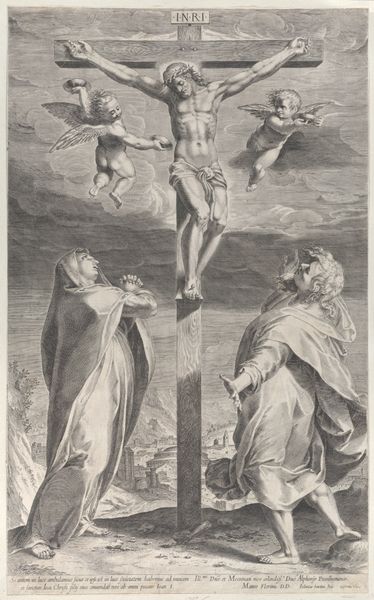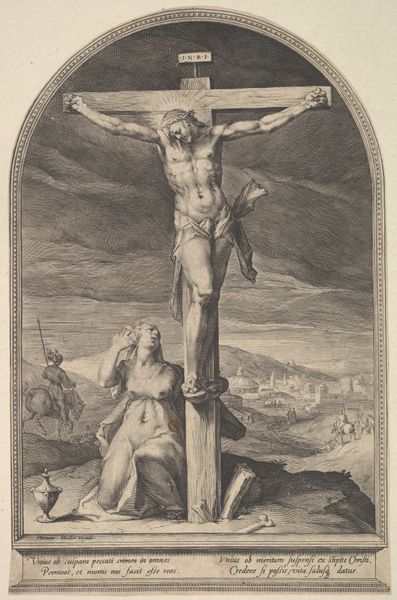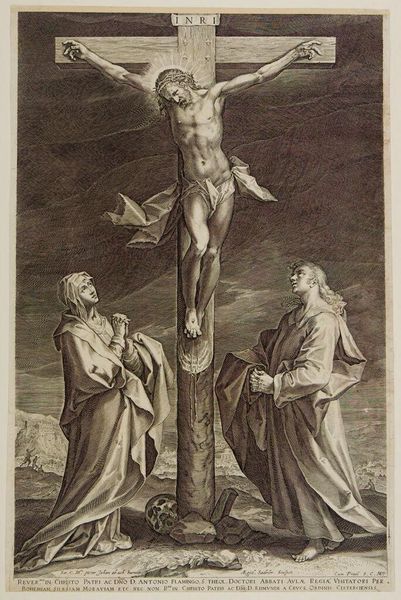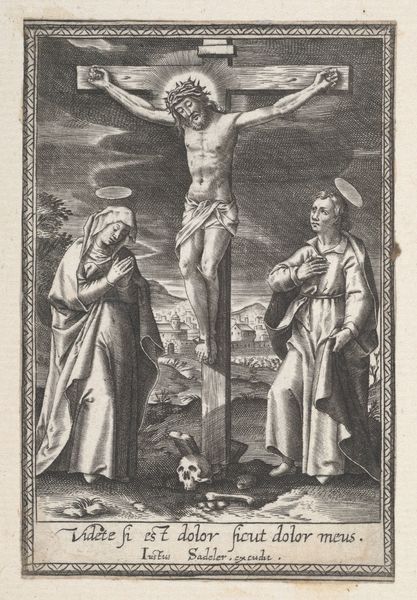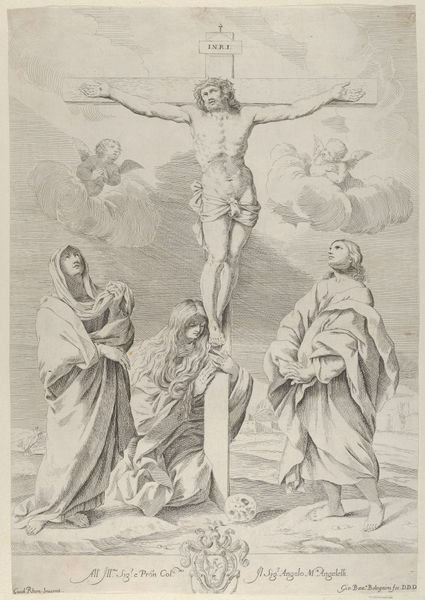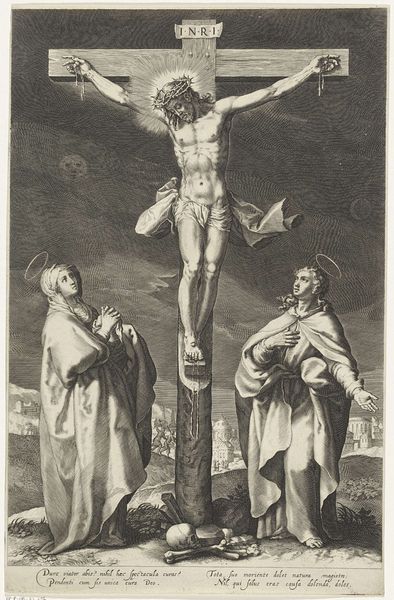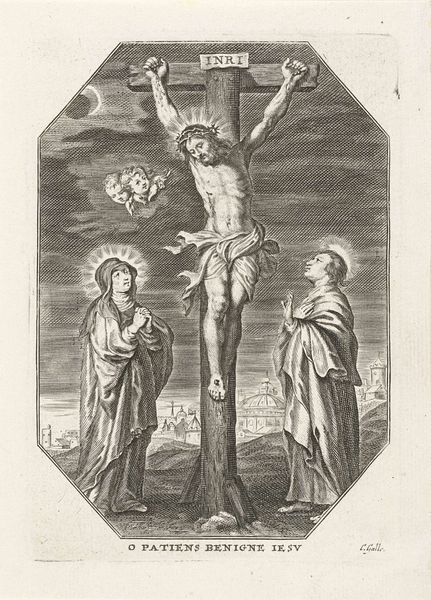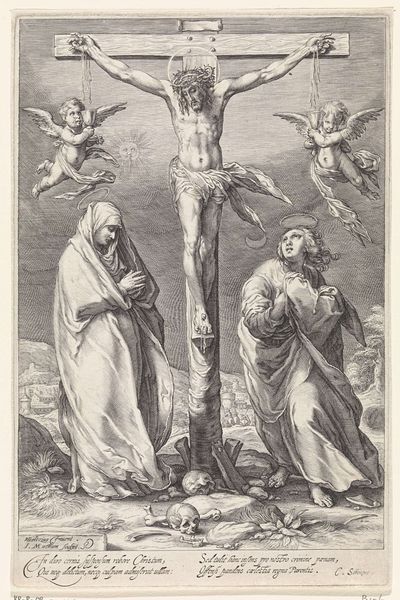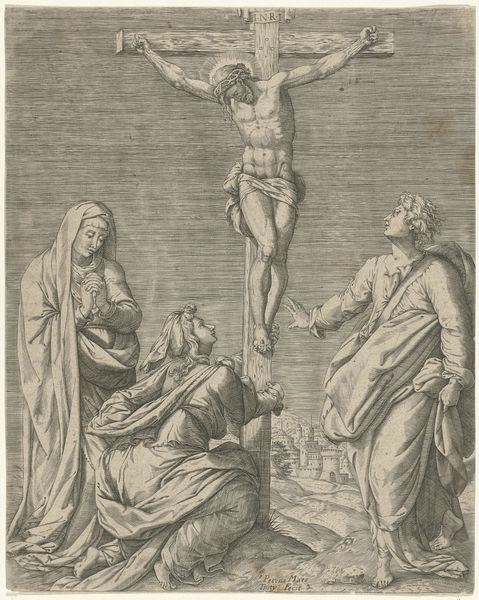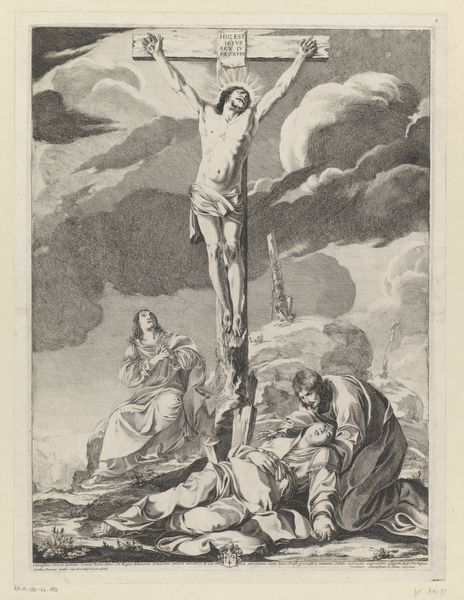
print, engraving
#
portrait
#
baroque
# print
#
figuration
#
surrealism
#
portrait drawing
#
history-painting
#
engraving
Dimensions: 511 mm (height) x 314 mm (width) (plademaal)
Editor: This engraving, "Christ on the Cross Between Mary and John", was created by Andreas Reinhardt in 1712. It’s interesting seeing such a familiar religious scene rendered with so much fine detail in the engraving process. How do you approach interpreting a work like this? Curator: Well, considering the historical context, engravings were not just artistic expressions, but also a means of mass communication and dissemination of ideas. Think about the labor involved in creating the matrix and producing numerous prints, making it available to a wider audience than a painting could reach. Who were the intended consumers, and how would their socio-economic status influence their reception of the work? Editor: That's a good point. It wasn’t just about artistic skill, it was about production and consumption. So, was Reinhardt producing these engravings for the wealthy elite or for a broader audience? Curator: Given the subject matter and the period, it was likely commissioned or intended for institutions or individuals with religious affiliations. We should consider who controlled the means of production, and the workshops in which this was made. Do we know anything about the status of engraving as a profession at the time? How did engravers get trained, and where did their materials come from? The material context is everything. Editor: I see. So, instead of just focusing on the image itself, we look at the social and economic factors behind its creation and distribution. It’s like uncovering a whole network of relationships involved in this single print. Curator: Precisely. Think about the paper itself. Where did that come from, who produced it? The ink too. Everything contributes to the meaning and impact of the piece. Editor: I never considered art from that angle before! I was too focused on the style and religious representation. Curator: And considering labor and materiality opens it all up. Now you can look at how Reinhardt's process reinforces, resists, or subverts established power dynamics.
Comments
No comments
Be the first to comment and join the conversation on the ultimate creative platform.
